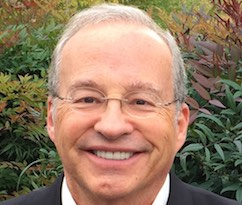Today the SC15 Energy Efficient HPC Working Group Workshop announced that parallel supercomputing pioneer Justin Rattner will deliver the keynote address at their event in Austin on Monday, November 16th, 2015. Formerly head of Intel Labs, Rattner directed Intel’s global research efforts in microprocessors, systems and communications including the company’s disruptive research activity.
“Justin’s vision and leadership in the late 80s and early 90s led to the first teraflop supercomputer and helped shape the technology direction and innovation that drove an exciting era of parallel supercomputing,” said Wilfred Pinfold, SC15 Steering Committee Member and Chief Executive Officer at Concurrent Systems LLC. “He is uniquely qualified to talk about perspectives on HPC system architecture and energy efficiency: looking back and forward.”
The SC15 EE HPC WG workshop provides a strong blended focus that includes both the facilities and system perspectives; from architecture through design and implementation. The topics reflect the activities and interests of the EE HPC WG, which is a group with 600 members from more than 20 different countries.
“Intel first highlighted the then-projected exponential increase in chip power as far back as 2001 in a keynote address at the International Solid State Circuits Conference,” recalls retired Intel CTO, Justin Rattner. The “Surface of the Sun” slide from that talk went viral within the limit of the Internet at the time. Despite the dire warnings, it wasn’t until a next-generation Intel microprocessor was cancelled just short of production that the industry understood why power consumption had to be fully addressed at every level of design from the silicon manufacturing process to the application software design. In other words, from the atoms and bits to intelligent system management software, every aspect of energy efficiency had to be re-engineered to keep total power within the limits of the mechanical and electrical system design. The switch from desktop to laptop and from laptop to smartphone further upped the ante. For tomorrow’s exascale systems, the three biggest design challenges are power, power, and power.”
Rattner joined Intel in 1973 and was named its first Principal Engineer in 1979 and its fourth Intel Fellow in 1988. In 1989, he was named Scientist of the Year by R&D Magazine for his leadership in parallel and distributed computer architecture. In December 1996, Rattner was featured as Person of the Week by ABC World News for his visionary work on the Department of Energy ASCI Red System, the fastest computer in the world between 1996 and 2000. In 1997, Rattner was honored as one of the Computing200, the 200 individuals having the greatest impact on the U.S. computer industry today, and subsequently profiled in the book Wizards and Their Wonders from ACM Press.
The EE HPC WG is a preeminent forum for major supercomputing centers to collaborate on best practices and recommendations for energy efficiency improvements and reducing operational costs,” said Dona Crawford, Associate Director of Computation at Lawrence Livermore National Laboratory. “The SC15 EE HPC WG workshop provides an excellent opportunity for EE HPC WG members to meet each other in person as well as a venue for non-members to find out more about the activities of the WG.”
The SC15 EE HPC WG workshop provides a strong blended focus that includes both the facilities and system perspectives; from architecture through design and implementation. The topics reflect the activities and interests of the EE HPC WG, which is a group with 600 members from more than 20 different countries. Registration for the workshop is via SC15 and can be done at http://sc15.supercomputing.org/register.
See our complete coverage of SC15 * Download the Print n’ Fly Guide to SC15 in Austin




